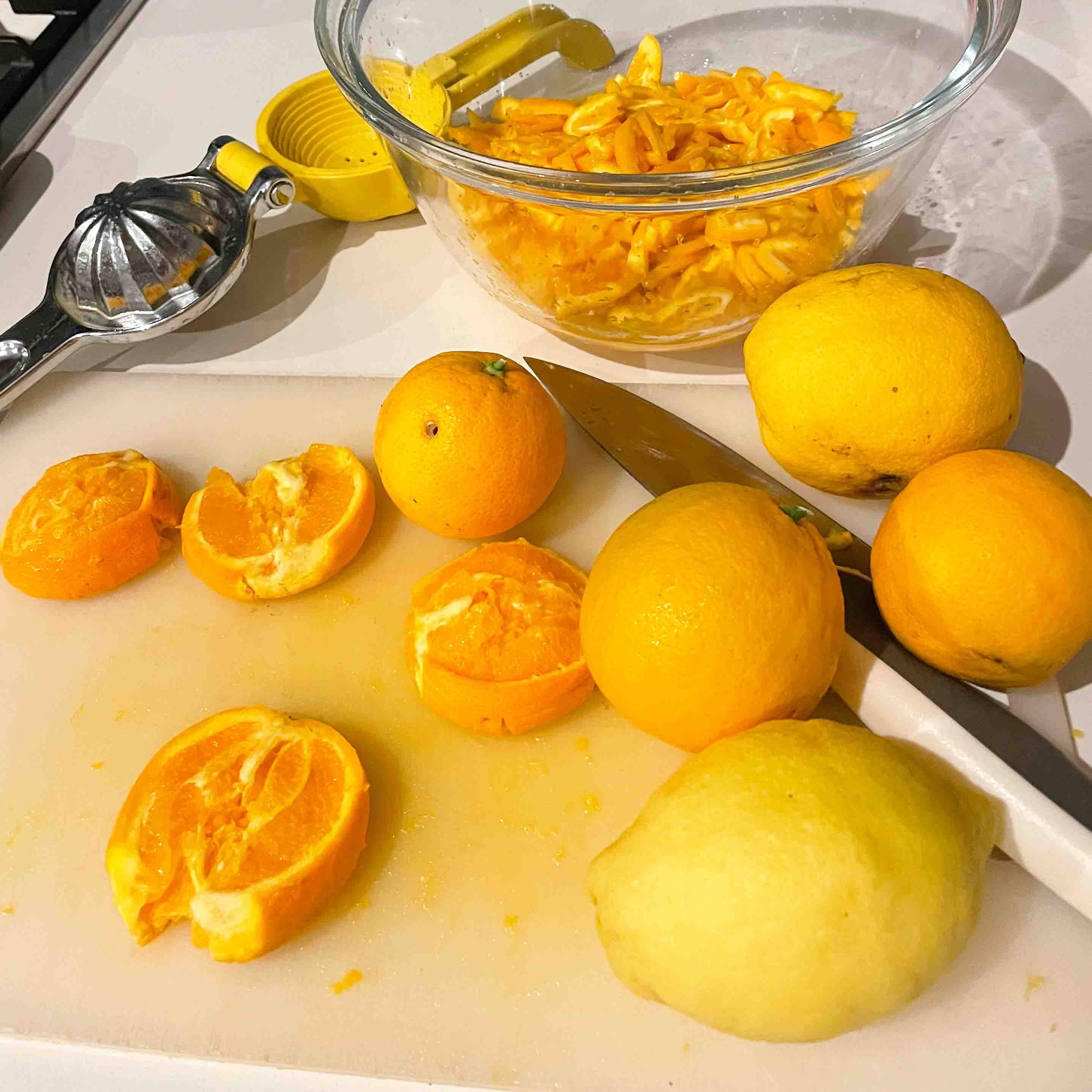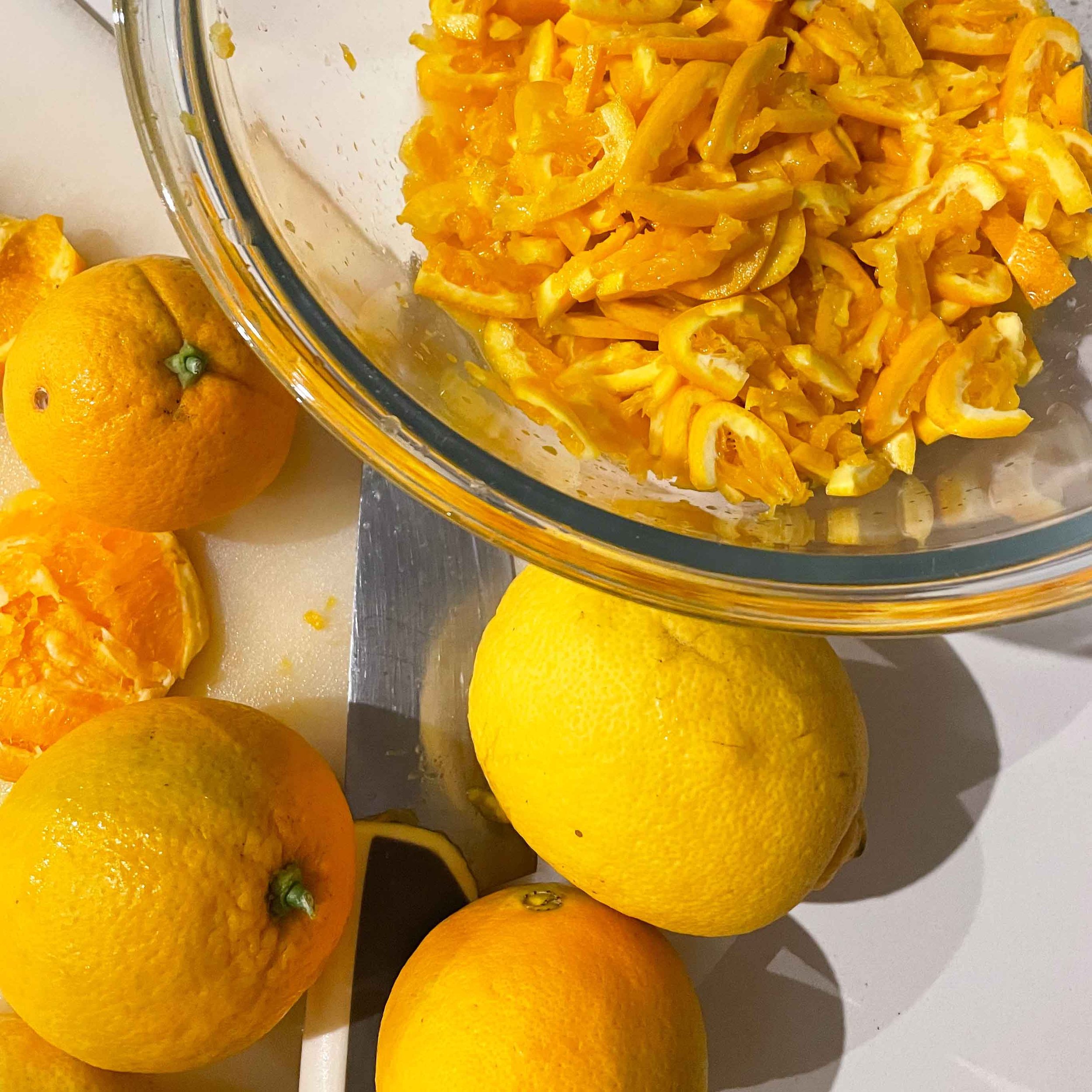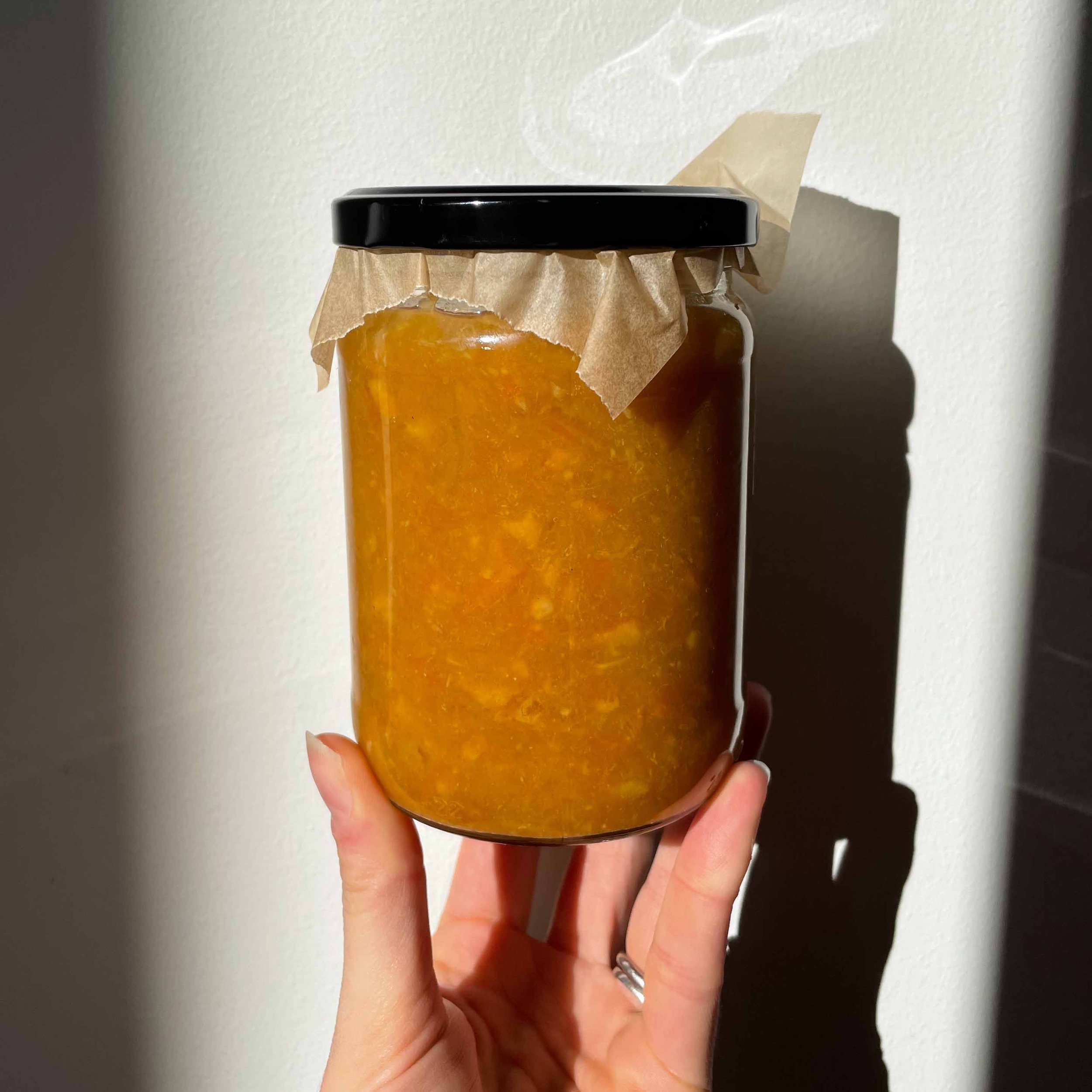Recipe: Waste-free Wednesday Citrus Marmalade
It's waste-free Wednesday and time to save your oranges, lemons, grapefruit and any other citrus fruits from going into compost. Winter months in Victoria are abundant with citrus fruits, but sometimes it's hard to know what to do with a sudden glut of lemons, oranges, or grapefruits. This any-fruit marmalade makes the most of citrus fruit now and means you'll be able to enjoy the fruits for the rest of the year.
Time: around 3 hours
Ingredients:
– 1kg citrus
– 1kg sugar
– 2 litres water
– Clean glass jars
Method:
1. Halve the fruit, and squeeze out the juice into a big bowl.
2. Slice the halved pieces into strips that are roughly the same, you can choose how chunky.
3. Put the slices into the bowl with the juice and add 2 litres cold water.
4. Leave overnight to 24 hours in the fridge.
5. Pour the fruit and liquid into a large pan, bring up to the boil and then turn down to a simmer.
6. Cook for around 1-2 hours, until the fruit is soft, and the liquid has reduced by around one third. The fruit should be soft enough that it falls apart when pressed with a spoon or in between your fingers.
7. Add the sugar slowly to the pan, and keep stirring to dissolve it completely on a low heat.
8. Rapidly boil until setting point is reached. This article goes through in great detail how to work this out: A thermometer is the best way to check – aim for 104 degrees C, and be sure it doesn't go too far otherwise your marmalade will be too thick and bitter.
9. While the marmalade is boiling, wash your jars in hot soapy water, and then place in a low oven (100 degrees C) on their side to dry.
10. Turn the marmalade off the heat when it’s ready, and leave for around 10 minutes before jarring.
11. Put the lids on while it's still hot, and leave on the kitchen bench for 24 hours to cool before placing in the fridge. Correctly jarred marmalade should not need to go in the fridge, but if you're unsure and have space, put it in the fridge. Enjoy on toast, in scones, or use to glaze a ham.



